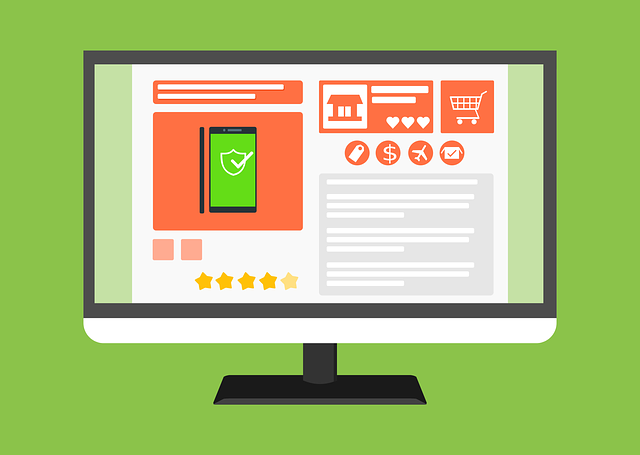Chatbots are transforming customer experiences in e-commerce by offering instant support, expediting purchase decisions, and reducing costs. Defining their scope, selecting robust technology, designing natural language interactions, and rigorous testing are crucial steps to ensure these virtual assistants drive sales and foster loyalty. By prioritizing user needs and continuously refining chatbot knowledge bases, ecommerce businesses can maximize the benefits of this game-changing technology.
In today’s digital landscape, an AI chatbot can be a game-changer for your ecommerce website. This advanced technology enhances customer engagement, provides 24/7 support, and offers personalized product recommendations. This article guides you through creating an effective chatbot, covering key aspects from understanding its role in ecommerce to defining scope, choosing the right tech, designing flows, testing, deployment, and continuous improvement. By following these steps, you’ll empower your website with a powerful chatbot for enhanced customer interactions.
- Understanding the Role of Chatbots in Ecommerce
- Defining Your Chatbot's Purpose and Scope
- Choosing the Right Technology and Platform
- Designing Conversational Flows and Scenarios
- Testing, Deploying, and Continuously Improving Your Chatbot
Understanding the Role of Chatbots in Ecommerce

Chatbots are transforming the way businesses interact with their customers, and their impact is particularly significant in the realm of ecommerce. A chatbot for an ecommerce website serves as a virtual assistant, providing instant customer support and enhancing user experiences. By offering quick answers to frequently asked questions, these bots can significantly reduce response times, allowing shoppers to make informed purchases faster.
In today’s digital era, where convenience is paramount, integrating a well-designed chatbot into an ecommerce platform can drive sales and foster customer loyalty. It can guide users through the purchasing process, offer personalized product recommendations, and even handle post-purchase inquiries, creating a seamless and engaging shopping journey. This technology ensures that businesses can provide 24/7 assistance while also reducing operational costs.
Defining Your Chatbot's Purpose and Scope

Defining the purpose and scope of your AI Chatbot is a crucial step in the development process, especially for an ecommerce website. Before you begin, consider what specific tasks or inquiries your chatbot will address. Will it provide product recommendations, answer customer questions about shipping or returns, assist with order tracking, or offer post-purchase support? Clearly outlining these functions ensures your chatbot is tailored to meet the unique needs of your online store and its customers.
For an ecommerce chatbot, understanding your target audience’s preferences and pain points is essential. Analyze user behavior on your website to identify common queries and areas where human assistance often falls short. By defining these parameters, you can create a more efficient and effective chatbot that enhances the overall customer experience, driving sales and fostering client loyalty.
Choosing the Right Technology and Platform

When creating an AI Chatbot, particularly for an ecommerce website, selecting the right technology and platform is a pivotal step. Look for platforms that offer robust natural language processing (NLP) capabilities, as this enables your chatbot to understand customer queries accurately. Integrating machine learning algorithms allows your chatbot to learn from user interactions, improving its performance over time. Popular choices include Dialogflow, IBM Watson Assistant, and Microsoft Bot Framework, which provide scalable and customizable solutions for both small businesses and large enterprises.
Consider the specific needs of your ecommerce platform. For instance, if you deal with a wide range of products and categories, ensure your chatbot can navigate these complexities seamlessly. A user-friendly interface for developers is also essential to facilitate quick updates and enhancements. Additionally, choose platforms that offer easy integration with your existing systems, such as CRM, payment gateways, and inventory management software, to provide a cohesive customer experience.
Designing Conversational Flows and Scenarios

When designing a chatbot for an ecommerce website, understanding customer needs and journey is crucial. Conversational flows should mimic natural language interactions, addressing common queries and guiding users through their purchasing process seamlessly. Map out various scenarios—from product recommendations to checkout assistance—ensuring the chatbot provides accurate, contextually relevant responses at every step.
This involves creating branching pathways based on user inputs, allowing for dynamic conversations. For instance, if a user asks about product availability, the chatbot should be able to check inventory and offer alternatives or wait times, all while maintaining a friendly and helpful tone. By anticipating these interactions, you can craft effective responses, enhancing the overall user experience and potentially increasing conversions for your ecommerce platform.
Testing, Deploying, and Continuously Improving Your Chatbot

Testing is a crucial step in developing an effective chatbot for an ecommerce website. Once your chatbot is trained, it’s essential to put it through rigorous testing to ensure accuracy and reliability. Start by simulating common user queries and gauging the chatbot’s performance. Use tools that allow you to track conversation metrics, such as response time, success rates, and user satisfaction scores. This data will help identify areas for improvement and fine-tune your chatbot’s responses.
Deploying your chatbot is the next step in bringing it live for customer interactions. Choose a suitable platform or integrate it directly into your ecommerce website to ensure a seamless experience. Continuously monitor its performance post-deployment, gathering user feedback and analyzing conversation logs. Regularly update and refine your chatbot’s knowledge base using this valuable data. This ongoing improvement process ensures that your chatbot remains effective, keeps up with industry changes, and enhances the overall customer experience on your ecommerce platform.
Creating an AI chatbot for your ecommerce website is a strategic move that can enhance customer engagement, streamline support, and drive sales. By understanding your target audience, defining clear purposes, choosing the right technology, designing thoughtful conversational flows, and continuously improving based on user interactions, you can harness the power of chatbots to deliver a seamless and personalized shopping experience. Implement these steps, and watch your ecommerce business prosper with the assistance of this cutting-edge technology.
